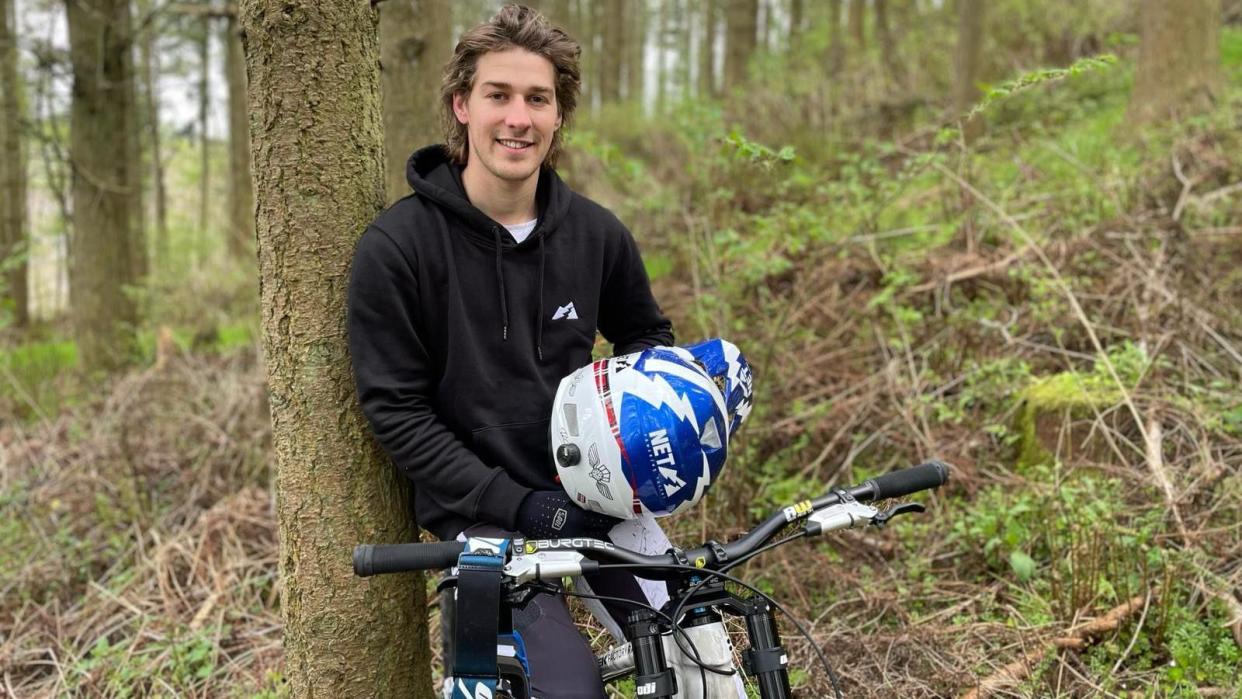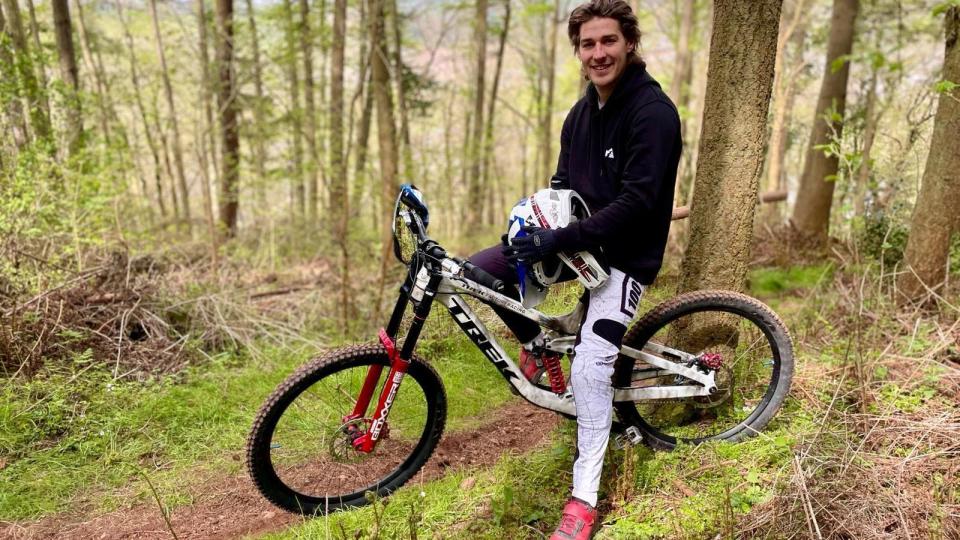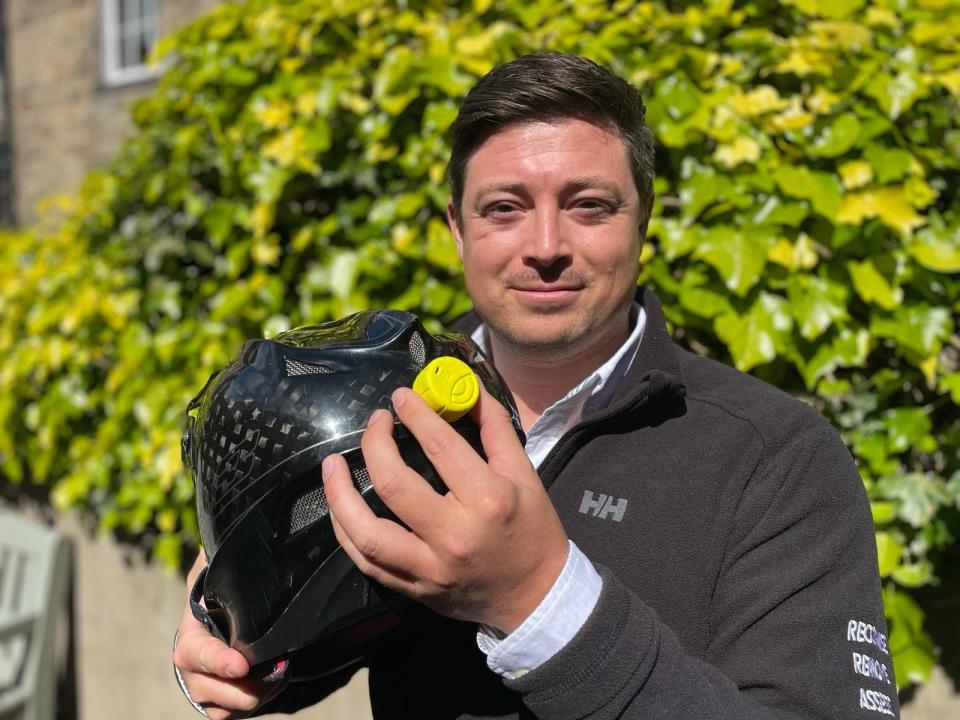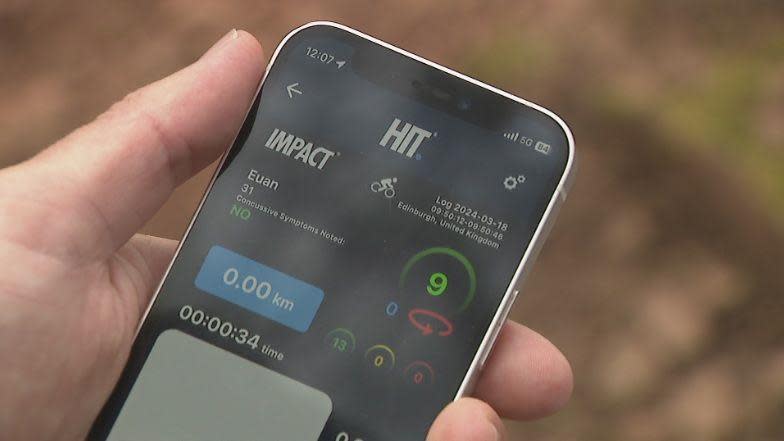Helmet tech helps riders judge concussion risk

As Reece Wilson hurtles down mountain bike trails at almost 40mph you wouldn’t know he has spent almost two years recovering from broken bones, dislocated joints and severe concussion.
He won the downhill event at the 2020 Mountain Bike World Championships in Austria but his career was interrupted soon afterwards.
“I just had one crash that I didn’t think was all that bad, continued to ride and then two weeks later I had another crash and that led to another crash,” the 27-year-old said.
“I started to pick up some symptoms of general nausea, a bit dizzy, sensitivity to light, all the usual symptoms and that is only when I realised that there was maybe something more going on and as I looked into it I realised I had a concussion that was actually quite advanced and I needed a considerable bit of time off.”

Over the past decade there has been growing awareness about the risk of concussion associated with rugby and football. But now other sports are waking up to the risk and looking at ways to mitigate it.
During his recovery, Reece trialled technology to monitor any impacts to his head, not just from falls but the accumulation of bumps, jumps and quick turns on the bike trails.
Edinburgh businessman Euan Bowen created the HIT device, which can attach to the back of a cycling helmet to measure speed and impacts.
He said mountain bikers could experience double the force of head knocks in football and rugby even without crashing.

He said: “If you are doing a full day’s riding you are going to have sore legs but it can be the same with your brain.
“It’s not just about the big impacts. In football and rugby we talk about the repetition of heading the ball and head knocks. In mountain biking it’s all those little impacts that can accumulate.
“The brain is the one organ that can’t self-diagnose and that’s why we get sub-concussive and concussive symptoms. What we are trying to do here is give people a flag, to tell them when they have had a severe impact.”
Developed in Edinburgh, the HIT device measures the force of any head knocks and sudden movements. It connects to an app which provides a real-time traffic light warning system.

As well as falls and blows to the head, for bikers the device accumulates movements and rotational force throughout a ride in order to give an informed decision on whether to stop riding and when to seek medical attention.
As riders prepare for the start of the Mountain Bike World Series in Fort William, around 50 competitors will wear the HIT attachment to their helmet to better understand the impacts on their brain.
“You never want to miss an event,” Reece said.
“You see people out there with broken bones and whatever else taping them up and just trying to get on with it - but when it’s your head and you can’t see it, and you really can’t take that risk.
“You have to pay attention to science like this when it tells you to take a rest.”

